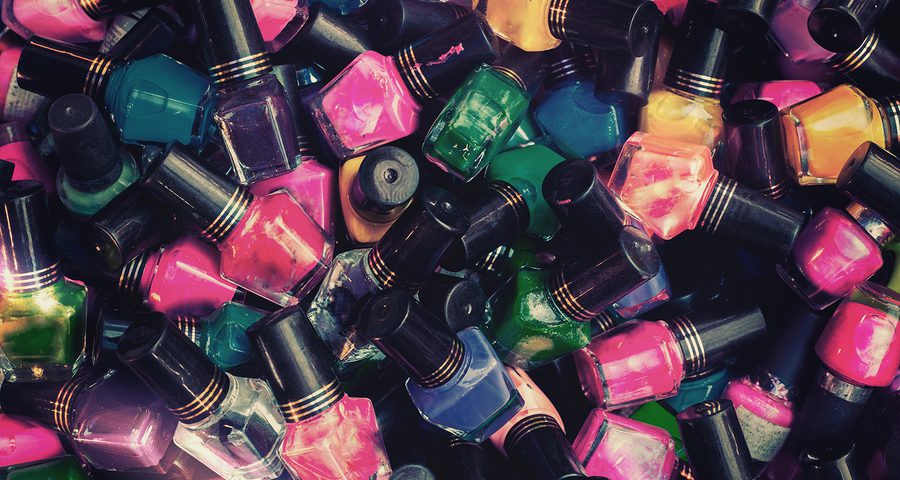Few markets have proven themselves to be more lucrative than that of the personal care and beauty sector. The industry experienced a dynamic 6% value increase in 2018[1] and experts anticipate a continued revenue rise of 7.14% within the next five years.[2]
As the region with the largest beauty market in the world, the US is on track to achieve record sales of $90 billion by 2020 – a 45% growth over the last decade. With this success comes the growing risk of the production and distribution of counterfeit products – creating serious problems for businesses when it comes to brand reputation and sales. Cosmetics rank in the top-five fake items produced worldwide, according to the Organization for Economic Co-operation and Development. And, with the growth of e-commerce and social media, it is easier than ever for counterfeiters to market their fake products to consumers. In fact, figures from US Customs and Border Protection reveals that counterfeit products now cost the cosmetics industry more than $75 million annually.
Social media is one of the most defining phenomena of the modern world, and the consumer relationship with social media platforms has rapidly evolved from social sharing to direct consumption. Research by brand protection solution provider, Red Points, has revealed the true extent of the risk posed by social media, with 45% of respondents admitting to buying cosmetics via social media platforms, and more than half (57%) saying they would buy an item from a third party if it was offered at a discounted rate[3]. With around 79% of the North America population having at least one social account – the highest social network penetration rate in the world[4] – this presents vast opportunities for counterfeiters.
And, with the lure of discounted and counterfeit fan favourites, brands are stepping out to warn consumers of the dangers. Just last year, founder and owner of Kylie Cosmetics, Kylie Jenner, responded to a fan who queried the validity of a product. She was quick to confirm that the brand was only available via its official website. Just a few months later, Rihanna’s Fenty Beauty notified shoppers via Twitter about an unauthorized online retailer purporting to sell Fenty products, providing information on its authorised distributors.
Both cases demonstrate the growing awareness of the risks posed by counterfeit products. In fact, 69% of respondents in the Red Points survey admitted to being concerned about counterfeits in the cosmetics industry, believing it to be a very real problem. And they are right to be concerned; lab tests have revealed that counterfeit perfumes sometimes contain cyanide and human urine while some fake eyeliners, mascaras, lip glosses, and foundation have been found to contain arsenic, mercury, and lead[5].
While half (50%) of consumers believe it is the brand owners’ responsibility to remove fake items from online platforms, what can business owners and marketers do to protect themselves from the risks posed by counterfeiters?
Understanding the most likely promotional channels is key to understanding where the risk is most prevalent. When analysing the channels that contribute the most to counterfeit sales, Red Points found that Facebook was a clear leader with 42.1%. However, the majority of sales listings, including adverts and promoted posts, redirected consumers to traditional e-commerce platforms. For example, a seller on eBay or Aliexpress may have one listing on the site for a fake product, but numerous posts on social media enticing consumers to buy. Both sales platforms rank in the top five channels for the promotion and sale of counterfeit items, with 30% found on eBay and a further 7% on Aliexpress.
With social media clearly posing a significant risk to a cosmetic brand’s intellectual property (IP), business owners should consider registering product names and logos as trademarks, and seek protection in all regions where it plans to market its products in. While often requiring significant investment, when it comes to fighting counterfeits – on and offline – this step in any brand’s journey is essential. Cosmetic companies can also turn to major online retailers for support, for example, Amazon’s Brand Registry, which helps companies protect their approved, registered trademarks.
Monitoring for cases of counterfeiting, while time-consuming, is also important for brands to reduce the impact of illegally marketed products. By understanding the channels most active for promoting counterfeit products, brand owners can gain sight of how, and where, their products are being advertised for sale, illegally.
Finally, consumers are key in the fight against the fakes. By educating customers on the risks pertaining to counterfeit products, brands can begin to take back control. And, as Kylie Cosmetics and Fenty Beauty demonstrate, using the brand’s official social media channels to inform potential customers on the authorised retailers as well as calling out websites parading as the real deal, can help retain loyalty and ultimately, sales.
It’s amid this increasingly competitive market, that in-cosmetics North America returns to New York City this October from 23 – 24, offering indie brand owners, marketers, R&D professionals, and chemists across the NPD value chain the opportunity to gain inspiration from industry-leading experts, source innovative ingredients, engage and connect with international suppliers and discover the latest industry trends.
In addition, ingredients from exhibitors at this year’s in-cosmetics North America will also be put under the spotlight. In the lead up to the show, the new MarCos ‘Star of the Month’ will see experts champion an ingredient for its innovative qualities, while offering insights on how it can be used within a formulation, and the benefits for new product development.
in-cosmetics North America will take place at the Javits Center in New York from 23-24 October 2019. For more information, please visit http://northamerica.in-cosmetics.com
[1] https://blog.euromonitor.com/the-story-behind-the-data-euromonitors-latest-beauty-and-personal-care-data-2019/
[2] Mintel
[3] https://www.redpoints.com/press/social-media-infringements-among-top-threats-to-cosmetics-industry-ip/
[4] https://www.statista.com/topics/3196/social-media-usage-in-the-united-states/
[5] https://www.allure.com/story/england-counterfeit-beauty-products


Besides trade and anti-counterfeiting agreements, there are various organizations that help in the fight against counterfeiting.